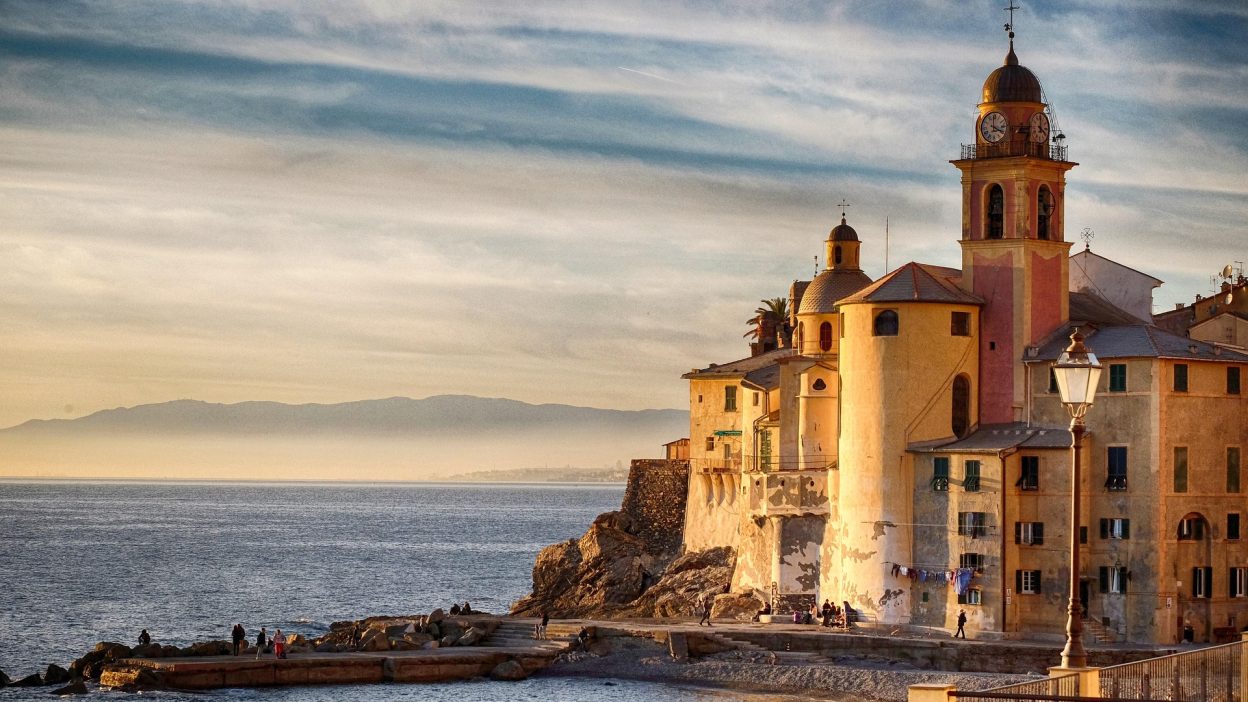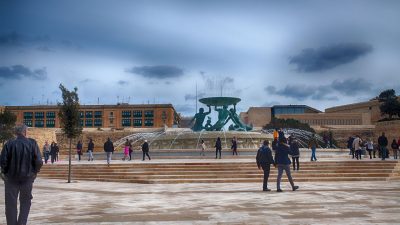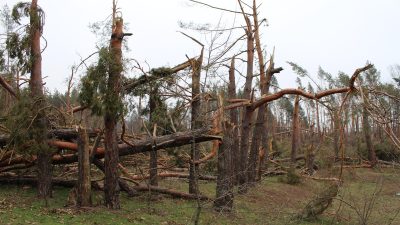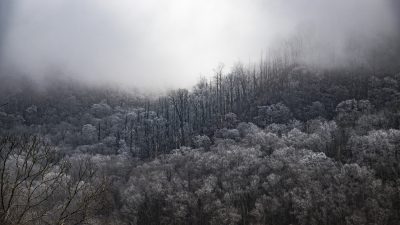The Deadliest Avalanche in War History – Tragedy, Controversy, and the Forgotten Massacre
Introduction: The Avalanche Massacre of 1916
On 13th December 1916, one of the deadliest natural disasters in military history struck the Italian Front of World War I. Known as “White Friday,” this catastrophic event saw a series of massive avalanches crash down on the Austro-Hungarian and Italian armies, burying thousands of soldiers alive under tonnes of ice and snow. The worst avalanche, on Mount Marmolada, crushed entire barracks and outposts, leaving over 10,000 troops dead in a matter of seconds. It was a tragedy on an unimaginable scale, made even worse by the brutal winter conditions, which ensured that many who weren’t immediately killed froze to death, suffocating under the weight of the snow. This disaster remains one of the most overlooked yet horrifying moments of the First World War.
But was White Friday merely an act of nature, or did human hands set it in motion? While record-breaking snowfall and unstable terrain were major factors, eyewitness accounts and historical research suggest that artillery shelling and possibly deliberate explosions may have triggered the deadly avalanches. Some reports claim that Austro-Hungarian forces used explosives to trigger the collapses, attempting to weaponise the mountains themselves. Others argue that reckless military decisions, such as stationing troops in high-risk avalanche zones, turned a natural disaster into a man-made massacre. Whether an unfortunate accident or an early form of environmental warfare, White Friday remains one of history’s most chilling reminders of the deadly interplay between warfare and nature’s fury.
A Frontline from Hell: War, Ice, and the Inevitable Doom
By 1916, the Italian Front had become one of the most brutal and unforgiving battlegrounds of World War I. Unlike the trenches of the Western Front, soldiers here weren’t just fighting enemy gunfire—they were battling the merciless Alps themselves. The war between Italy and the Austro-Hungarian Empire had turned into a deadly high-altitude standoff, with troops stationed at altitudes exceeding 3,000 metres (9,800 feet). These soldiers faced blizzards, sub-zero temperatures, and treacherous mountain terrain, where even a single misstep could send them plummeting to their deaths. But the greatest threat was something few had prepared for: the mountains’ ability to kill thousands in an instant.
The Italian and Austro-Hungarian armies had dug into the ice, constructing wooden barracks, tunnels, and trenches across snow-covered peaks. The winter of 1916 was particularly vicious, with record snowfall piling up in dangerously unstable layers. Despite warnings from local mountaineers, military leaders ignored the risks and continued their offensives. Every cannon blast, every explosion, and every movement sent vibrations through the mountains, making the already fragile snowpack even more unstable. Soldiers feared enemy bullets, but few realised that their greatest enemy was lurking above them, waiting to strike.
The Avalanche Fury: A Day of Unthinkable Horror
The morning of 13th December 1916 began like any other on the Italian Front, with soldiers enduring harsh conditions high in the Alps. But nothing could have prepared them for the unrelenting fury of nature that was about to unfold. Throughout the night, a series of heavily saturated snowstorms blanketed the mountain ranges, dumping several feet of fresh snow onto already unstable slopes. By dawn, the mountains were a ticking time bomb—fragile snow layers were precariously stacked, and the constant artillery fire from both sides had only made the situation more volatile. The Italian soldiers, stationed in their makeshift camps on Mount Marmolada and surrounding peaks, were oblivious to the imminent danger.
At around 10:00 AM, disaster struck. Without warning, the mountain exploded into chaos, as one massive avalanche tore down from Mount Marmolada, the tallest peak in the area. The avalanche was no ordinary slide of snow—it was a roaring wall of ice, rock, and debris that engulfed everything in its path. Entire regiments of Italian soldiers, who had been sleeping in their barracks or manning the frontlines, were buried instantly. Buildings were flattened, and tents and equipment were swallowed whole by the sheer weight of the avalanche. Some soldiers were buried so deep that even the most thorough search efforts could not find their remains. Meanwhile, others who managed to survive the initial impact were left to suffocate under tonnes of snow or freeze to death in the bitter cold.
This was only the beginning. Within the next 24 hours, a series of secondary avalanches followed, devastating other camps across the Italian Front. The combined effect of snowstorms, artillery bombardment, and poor military planning created a perfect storm of destruction. Survivors who were fortunate enough to escape the initial onslaught found themselves trapped, unable to flee or get help due to the mountain’s rugged terrain and the dangerous aftershocks of continuous avalanches. What was supposed to be a routine day of survival on the frontlines turned into a nightmarish massacre that would claim the lives of thousands. No one could have predicted the speed, scale, or brutality of nature’s attack, which left entire sections of the frontlines completely obliterated, never to be rebuilt.
The Grim Toll: How Many Lives Were Lost?
The death toll of the White Friday Avalanche remains one of the most devastating and uncertain figures of World War I. Estimates vary, but the total number of soldiers who perished in the avalanches is staggering. Here’s a breakdown of the horrific loss of life:
• 10,000 Soldiers: The most widely accepted figure for the total number of deaths caused by the avalanches on 13th December 1916, stands at around 10,000 soldiers. This includes both Italian and Austro-Hungarian forces, who were stationed along the frontlines in the Alps. The majority of these casualties were Italian troops, as their positions were particularly vulnerable to the avalanche’s path. Entire regiments were buried in their sleep, and others perished trying to escape the snow and ice. The sheer speed of the avalanches and the impossibility of immediate rescue efforts meant that survivors were few, and recovery operations were incredibly limited due to the dangerous conditions.
• Thousands of Missing Soldiers: The exact number of missing soldiers remains impossible to confirm, as many were simply never recovered. Reports suggest that many of the bodies were buried under several metres of snow and rock, making it impossible for search teams to locate them. Some survivors were trapped under the snow for days before succumbing to either asphyxiation or hypothermia. For years, soldiers’ names remained unaccounted for, their fates a mystery. The mountainous terrain made it nearly impossible to conduct full-scale recovery operations, and many of those lost on that fateful day remain entombed in the ice to this day.
• Few Survivors: In the aftermath of the disaster, only a small fraction of soldiers managed to escape the carnage. Italian records state that only about 500 to 1,000 soldiers survived the initial avalanche strikes. These survivors were often those who were stationed at the edges of the camps or in higher altitudes, where they were less likely to be caught in the avalanche’s direct path. Many of these survivors were left with severe injuries, and many others perished in the aftermath due to exposure and lack of food or water. The survivors were not only physically scarred but also emotionally devastated, having witnessed the loss of their comrades in such a brutal, sudden manner.
• Unaccounted Civilian Losses: Although the military death toll is the most documented, there were also civilian casualties, primarily mountain guides and local workers who had been employed by the military for snow-related tasks, such as clearing roads or building fortifications. While the numbers are much harder to pinpoint, it’s believed that at least several dozen civilians lost their lives due to the avalanches. Their contributions to the war effort were tragically cut short, as they were caught in the path of the deadly snow slides just like the soldiers they were assisting.
White Friday: A Natural Disaster or a Man-Made Massacre?
The White Friday Avalanche is often remembered as a natural disaster, but many historians and military analysts have questioned whether the catastrophe was entirely accidental. Was this simply an unfortunate act of nature, or did human hands play a role in triggering the deadly avalanches? There are multiple theories suggesting that reckless military strategy, deliberate enemy action, and even outright war crimes may have contributed to the massive loss of life. Here are the most controversial claims:
Theory 1: The Avalanches Were Deliberately Triggered as a Military Attack
Several accounts suggest that Austro-Hungarian forces may have intentionally triggered the deadly avalanches by using explosives or artillery fire.
• “Avalanche Warfare” – A Cold-Blooded Military Strategy
Some historians believe that White Friday wasn’t just an accident—it was an early example of environmental warfare. Reports indicate that Austro-Hungarian troops, desperate to break the Italian defences, strategically shelled snow-packed mountain slopes, causing controlled avalanches that buried Italian camps. If true, this would make White Friday one of the deadliest premeditated attacks in military history, carried out using the very landscape as a weapon.
• Suspicious Timing: Why Did the Avalanches Strike Key Italian Positions?
While the avalanches affected both armies, the worst destruction occurred on the Italian side. The deadliest avalanche struck Mount Marmolada, where Italian forces were heavily fortified. If the Austrians had planned the attack, they may have miscalculated the scale of destruction, leading to unintended casualties on their own side. But was this a failed military gamble, or simply an unavoidable consequence of war in extreme conditions?
Theory 2: The Italian Army Doomed Its Own Soldiers with Reckless Positioning
Some argue that Italian military commanders are equally to blame for the catastrophe, as they stationed troops in high-risk avalanche zones, ignoring warnings from local experts.
• “Death Trap Barracks” – The Army’s Fatal Mistake
Italian forces built their barracks and outposts directly beneath unstable snow formations, even after locals and mountaineers warned them of the risks. These barracks were poorly constructed and incapable of withstanding an avalanche, meaning the soldiers inside were instantly buried with no chance of escape. This reckless decision turned nature into a ticking time bomb, which inevitably detonated.
• Was the Avalanche Disaster Covered Up?
Some researchers believe that the Italian military tried to downplay the role of command errors in White Friday. The disaster was quickly blamed on natural forces, but internal reports suggest that there were warnings about the instability of the snowpack weeks before the event. Did military leaders ignore these warnings to maintain their strategic positions, knowing they were sacrificing thousands of men in the process?
Theory 3: The True Death Toll Was Hidden from the Public
There are strong suspicions that the actual number of casualties was far higher than reported, and that both the Italian and Austro-Hungarian armies manipulated the numbers to avoid public backlash.
• “Erased from History” – The Soldiers Who Were Never Counted
Official estimates put the death toll at around 10,000 soldiers, but some researchers believe the real number could be significantly higher. Thousands of soldiers were buried so deep that their bodies were never recovered, meaning they were never officially declared dead—only “missing.” This allowed both militaries to downplay the true cost of the disaster to their war efforts.
• Why Was White Friday Forgotten?
Despite being one of the worst natural disasters in wartime history, White Friday is rarely discussed in mainstream war narratives. Some believe that governments intentionally suppressed details of the event, as it would have exposed military incompetence, strategic failures, and possible war crimes. Could White Friday have been a swept-under-the-rug scandal, buried just like the soldiers it claimed?
Final Verdict: Natural Disaster or a Hidden War Crime?
While the avalanche itself was triggered by nature, there is strong evidence to suggest that reckless military actions, poor decision-making, and possibly deliberate attacks all contributed to the immense loss of life. Whether it was an intentional act of war or a disaster waiting to happen, White Friday remains one of the most haunting and controversial tragedies of World War I—a disaster where nature and human error collided in the worst possible way.
The Aftermath
The devastation of White Friday left both the Italian and Austro-Hungarian armies in shock, but the war did not pause for mourning. Rescue efforts were nearly impossible, as soldiers who attempted to dig out their buried comrades often triggered more avalanches, resulting in additional casualties. Many of the dead remained entombed under the snow, their bodies only discovered decades later as the glaciers receded. The military command, rather than learning from the disaster, continued to station troops in avalanche-prone areas, leading to further deadly snow slides throughout the war. Survivors of the catastrophe were given little recognition, as both armies downplayed the event to avoid accusations of incompetence. Meanwhile, the Italian Front remained a frozen battlefield until the war’s end in 1918, with thousands more perishing—not just from enemy fire, but from the unforgiving mountain conditions. Today, White Friday remains a chilling reminder of how war can turn nature into a deadly force, and how the soldiers who fought in the Alps were not only victims of bullets but also of military negligence and the merciless grip of winter.
Buried by Snow, Forgotten by History: The Untold Legacy of White Friday
Despite being one of the deadliest disasters of World War I, White Friday remains largely overlooked in mainstream history. Why is an event that claimed more lives in a single day than many battles barely mentioned in war narratives? Is it because governments wanted to erase their failures? Or is it because the idea of soldiers perishing not by bullets, but by nature’s fury, doesn’t fit the glorified image of war? The 10,000 men who died that day were not heroes in an epic battle—they were victims of arrogance, poor leadership, and possibly even a deliberate attack.
For decades, the frozen corpses of these soldiers remained buried beneath the Alps, their final resting place undisturbed, forgotten by the nations they fought for. Unlike fallen warriors honoured in cemeteries, they received no grand memorials, no recognition, only a silent grave of ice and rock. It was only as climate change began melting the glaciers that some of these lost souls were uncovered—their weapons rusted, their bodies still wrapped in century-old uniforms, their fate unchanged. Their story remains one of war’s most haunting tragedies, a disaster that was dismissed as “just another wartime casualty” instead of the shocking, possibly preventable massacre it truly was.
Perhaps the biggest question remains: was White Friday an unavoidable act of nature, or was it an atrocity buried beneath the snow, just like its victims?
Frequently Asked Questions (FAQs)
- What was White Friday, and when did it happen?
White Friday refers to a series of devastating avalanches that struck the Italian Front on 13 December 1916, during World War I. The most deadly avalanche, on Mount Marmolada, buried thousands of soldiers alive under tons of ice and snow.
- How many soldiers died in the White Friday disaster?
The official death toll is estimated at around 10,000 soldiers, but some historians believe the real number could be even higher due to missing troops and unreported casualties. Many bodies were never recovered, still buried beneath the ice.
- Was White Friday a natural disaster or a military attack?
While the avalanches were triggered by heavy snowfall, there are controversial claims that Austro-Hungarian forces may have deliberately triggered some avalanches using artillery fire, making it a possible case of environmental warfare.
- Did military commanders ignore warnings about the avalanche risk?
Yes, local mountaineers and military experts warned both armies about the instability of the snow, but these warnings were ignored. Italian forces were stationed in high-risk zones, turning their camps into death traps when the avalanches struck.
- Why is White Friday not well-known in history?
Unlike famous battles, White Friday was not a heroic event—it was a mass burial of soldiers by nature. Governments may have downplayed or suppressed details to avoid responsibility, and the war continued with little recognition for the fallen.
References
Wikipedia: White Friday (1916)
https://en.wikipedia.org/wiki/White_Friday_(1916)
History.com: Soldiers perish in avalanche as World War I rages
https://www.history.com/this-day-in-history/soldiers-perish-in-avalanche-as-world-war-i-rages
Encyclopedia Britannica: Tirol avalanches of 1916
https://www.britannica.com/event/Tirol-avalanches-of-1916
Guinness World Records: Deadliest single avalanche
https://www.guinnessworldrecords.com/world-records/worst-avalanche-disaster-death-toll
Lost in History: White Friday 1916 – History’s Deadliest Avalanche occurred during WWI
https://lost-in-history.com/white-friday-1916-historys-deadiest-avalanche-occurred-during-wwi/
YouTube links
Deadliest Avalanche: “White Friday”, December 13, 1916
White Friday (1916)
White Friday 1916 – World War I Deadly Avalanchehttps://www.youtube.com/watch?v=e9ghdyeQht0




